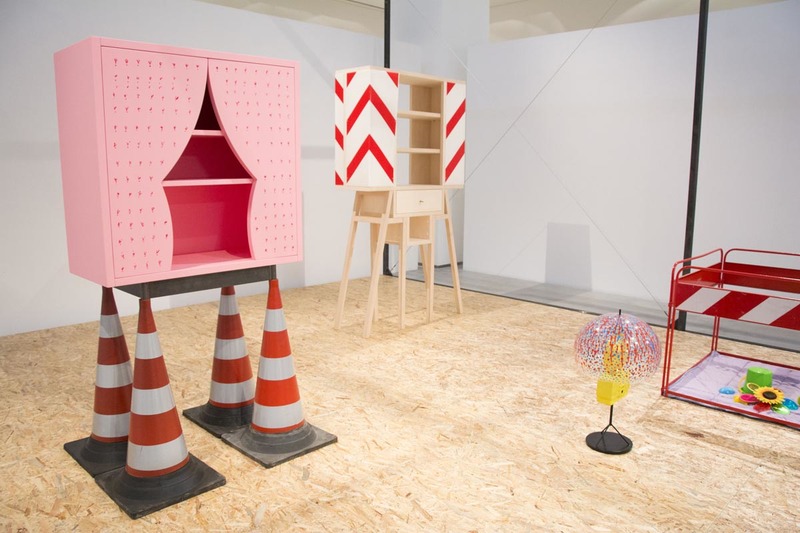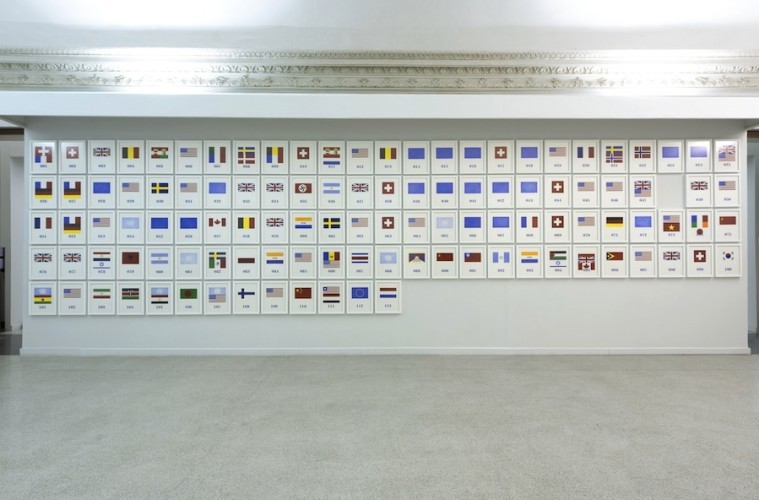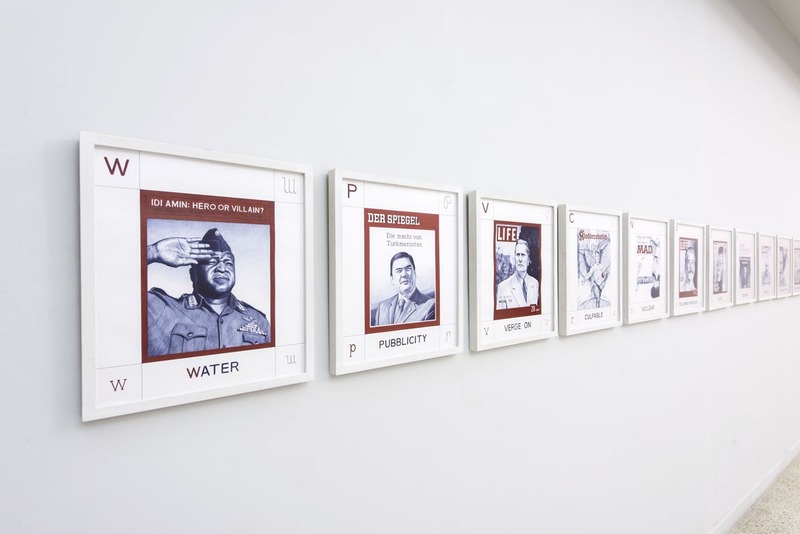La Pietra and Stampone at Foligno’s Centre of Contemporary Art
Foligno’s Centre of Contemporary Italian Art is hosting a double exhibition. On display are the two renowned Italian artists Ugo La Pietra and Giuseppe Stampone.
Ugo La Pietra
Ugo La Pietra’s ‘Istruzioni per abitare la citta’ traces a number of recurrent themes in the artist’s eclectic work. The show’s title, which translates to ‘Instructions for living in the city’, refers to the artist’s investigative approach towards the urban environment.
Since the 1960s, La Pietra has explored the activities integral to the relationship formed between an individual and the environment they occupy. The artist underwent a stylistic evolution in the early stages of his career. The breadth of subject matter he tackled and his varied methodology mean he can be associated with multiple artistic currents such as conceptual art, land art, social art, new writing, new eclecticism, and radical architectural design.
A thematic thread present in his practice is his investigation of the complexities of urbanisation. Many prominent works displayed at Istruzioni per abitare la citta combine his socio-economic concerns with the implications of territorial boundaries.
Foligno’s history
Found at the exhibition’s entrance are two monuments dedicated to one of Foligno’s historical significances: the first printed edition of Dante’s The Divine Comedy. La Pietra provides instructions for the viewer to interpret the works through a collection of works that include wall and floor-based installations and a projection-specific room that reveals three of the artist’s early films: Stop for the Day, 1974; The Reappropriation of the City, 1977; and Public Interventions for the City of Milan, 1979.

Ugo La Pietra, Installation View, ‘Istruzioni per abitare la citta’, 2018. Image courtesy the gallery.
At the centre of La Pietra’s exhibition is Casa Aperta (Open House) (2018), a large structure with a composition of furniture-like designs. It has been created through the practice that the author calls “Riconversione progettuale” (design reconversion), whereby elements of urban architecture are converted into elements of home furnishings.
La Pietra’s process can be viewed akin to that of an ethnographer or anthropologist. He analyses urban habitats, considers their idiosyncrasies, their trivialities and nuances, and reflects on his findings through the construction of decodable objects and moving imagery. As La Pietra states in the exhibition’s press release: ‘I have the role that, since ancient times, was entrusted to intellectuals and just like them I have not favoured a specific instrument or language.’ Instead, his multidisciplinary methodology breaks away from regimented artistic conventions.
Giuseppe Stampone
Giuseppe Stampone’s exhibition, ‘Perche’ il cielo e’ di tutti e la terra no?’ (Why does the sky belong to everyone and the land does not?), presents some of his most recent work. The show follows on from his solo show, under the same (somewhat ironic) name at THE POOL NYC in Milan earlier this year. Stampone adopts Gianni Rodari’s nursery rhyme, ‘The sky belongs to everyone’ (below), for the show’s title. Whilst channeling the poem’s contemplative essence, Stampone subverts its childlike tone to infantilise and satirise the significance of the matters he addresses throughout the show.
(Italian translation)
Il cielo è di tutti gli occhi,
ed ogni occhio, se vuole,
si prende la luna intera,
le stelle comete, il sole.
Ogni occhio si prende ogni cosa
e non manca mai niente:
chi guarda il cielo per ultimo
non lo trova meno splendente.
Spiegatemi voi dunque,
inprosa od in versetti,
perché ilcielo è uno solo
e la terra ètutta a pezzetti.
(English translation)
The sky belongs to every eye,
and if it likes, each and every one,
can view the moon entirely,
the stars, the comets and the sun.
Every eye can view everything
and nothing is ever lacking there,
those who view the sky for last
will find it just as bright and fair.
So please explain to me,
in prose or even verses,
why the sky is only one
and the Earth is all in pieces.
Stampone is a contemporary Italian artist whose works tackle international social and political issues. Blending irony and humour in his meticulously hand-drawn works, Stampone is both an artist and an activist. Stampone founded the Solstizio Project, which binds together artists and activists to promote social agendas.
‘Why does the sky above belong to everyone and the earth below does not?’
‘Why does the sky above belong to everyone and the earth below does not?’ presents the viewer with a series of works that explore the appropriation of our own intimate time. This is especially vivid in his black, red and blue biro pen drawings. Layered with iconic imagery taken from the internet, he works into them, creating unique pieces that satirise or rebel against convention, hierarchy, status quo or, merely, the process of time. The subject matter he explores includes the reinterpretation of historical paintings, the satirisation of canonical artists, denouncing the recent migration crisis and the extreme poverty witnessed in certain populations across the world, and the battle for global education. Through text, figuration, maps and tourist guides, the viewer is encouraged to reflect on these current socio-political affairs.

Giuseppe Stampone, P & W, Peace & War (detail), 2014. Image courtesy the gallery.
P & W, Peace & War
The exhibition also includes pieces such as P-W Peace and War (2014), an installation measuring thirteen meters in length and displaying 114 flags. Each flag represents a country that has won the Nobel Prize. As Stampone described in a recent interview, ‘We are faced with the contradictions of the world and of humanity; we are faced with the contradictions of history. I tried to reveal the rules that establish the functioning of the world in a very simple manner, associating the name of the person or the international organization that received the Nobel prize with the country they belonged to. By this small change of point of view, one discovers that of 95 Nobel Peace prizes: 22 went to US citizens, thirteen to British, eleven to Swiss, followed in the rating by French, Germans, Swedes and so on.’ Stampone highlights the relationship between the internationally recognised prize and the economic powers at its core, thereby exposing the often-overlooked power dynamic at its heart.

Giuseppe Stampone, Dittatura, 2012. Bic on paper. Series of 20, 48×42 cm. Image courtesy the gallery and artist.
A new work, created for the show titled, Why there is only one sky when the earth is broken into lots of pieces (2018) (another sentence by Rodari), is made with a biro pen. It highlights the relationship between power and sovereignty through a reinterpretation of Nicolò Alunno’s polyptych Donna Brigida (1492), which is stored in Foligno’s Church of San Nicolò.
The work is placed beside six white empty frames and set against the white gallery wall. It holds information tags that mention the artists’ names, and details of the artworks they are meant to evoke. These include The Resurrection (1465) by Piero della Francesca, Raft of the Medusa (1818-19) by Gericault, Liberty Leading the People (1830) by Delacroix, The Fourth Estate (1901) by Pellizza da Volpedo, Guernica (1937) by Pablo Picasso, and We Are the Revolution (1972) by Joseph Beuys.
The show, which was curated by Italo Tomassoni, Giacinto Di Pietrantonio and Giancarlo Partenzi, will come to an end on 30 September.
Cover image: Giuseppe Stampone, P & W, Peace & War (detail), 2014. Image courtesy the gallery.
Author: George Greenhill
